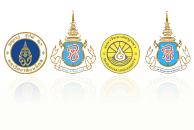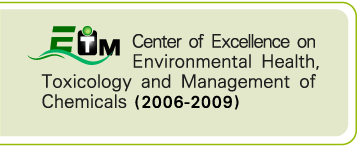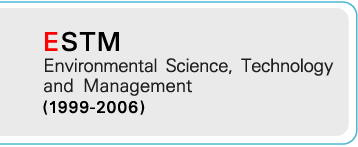Identification of environmental toxicity of bioextract from municipal solid waste in using as soil conditioner: case study in Bangkok
Dr. Tawach Prechthai Faculty of Public Health, Mahidol University This laboratory study was to identify the environmental toxicity of bioextract from municipal solid waste to be used as soil conditioner. The animal part bio-extract, vegetable bio-extract and the animal part mixed vegetable bioextract sample were prepared from the waste collected from the market in Bangkok…. (read more)
 Center of Excellence on Environmental Health and Toxicology (EHT)
Center of Excellence on Environmental Health and Toxicology (EHT)










